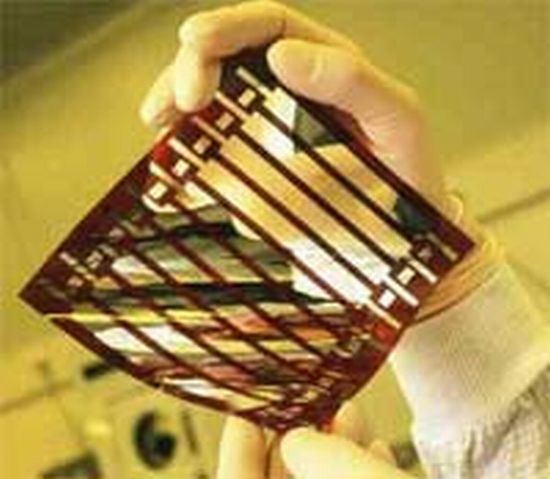 A conceptual model of the whale pump. In the common concept of the biological pump, zooplankton feed in the euphotic zone and export nutrients via sinking fecal pellets, and vertical migration. Fish typically release nutrients at the same depth at which they feed. Excretion for marine mammals, tethered to the surface for respiration, is expected to be shallower in the water column than where they feed.
A conceptual model of the whale pump. In the common concept of the biological pump, zooplankton feed in the euphotic zone and export nutrients via sinking fecal pellets, and vertical migration. Fish typically release nutrients at the same depth at which they feed. Excretion for marine mammals, tethered to the surface for respiration, is expected to be shallower in the water column than where they feed.
Whale feces -- should you be forced to consider such matters -- probably conjures images of, well, whale-scale hunks of crud, heavy lumps that sink to the bottom. But most whales actually deposit waste that floats at the surface of the ocean, "very liquidy, a flocculent plume," says University of Vermont whale biologist, Joe Roman.
And this liquid fecal matter, rich in nutrients, has a huge positive influence on the productivity of ocean fisheries, Roman and his colleague, James McCarthy from Harvard University, have discovered.
Their discovery, published Oct. 11 in the journal
PLoS ONE, is what Roman calls a "whale pump."
Whales, they found, carry nutrients such as nitrogen from the depths where they feed back to the surface via their feces. This functions as an upward biological pump, reversing the assumption of some scientists that whales accelerate the loss of nutrients to the bottom.
And this nitrogen input in the Gulf of Maine is "more than the input of all rivers combined," they write, some 23,000 metric tons each year.
Nitrogen limits
It is well known that microbes, plankton, and fish recycle nutrients in ocean waters, but whales and other marine mammals have largely been ignored in this cycle. Yet this study shows that whales historically played a central role in the productivity of ocean ecosystems -- and continue to do so despite diminished populations.
Despite the problems of coastal eutrophication -- like the infamous "dead zones" in the Gulf of Mexico caused by excess nitrogen washing down the Mississippi River -- many places in the ocean of the Northern Hemisphere have a limited nitrogen supply.
Including where Roman and McCarthy completed their study: the once fish-rich Gulf of Maine in the western North Atlantic. There, phytoplankton, the base of the food chain, has a brake on its productivity when nitrogen is used up in the otherwise productive summer months. (In other parts of the ocean, other elements are limiting, like iron in some regions of the Southern oceans.)
"We think whales form a really important direct influence on the production of plants at the base of this food web," says McCarthy.
"We found that whales increase primary productivity," Roman says, allowing more phytoplankton to grow, which then "pushes up the secondary productivity," he says, of the critters that rely on the plankton. The result: "bigger fisheries and higher abundances throughout regions where whales occur in high densities," Roman says.
"In areas where whales were once more numerous than they are today, we suggest that they were more productive," say McCarthy.
The numbers of whales that swam the oceans before human harvests began is a question of some controversy. "Conservative estimates are that large whales have been cut to 25 percent," says Roman, "though the work done on whale genetics shows that we're probably closer to 10 percent," of historical levels. To cover the range of possibilities, Roman and McCarthy's study considered several scenarios, estimating current whale stocks as 10, 25, or 50 percent of historical levels.
"Anyway you look at it, whales played a much bigger role in ecosystems in the past than they do now," says Roman, a conservation biologist in the University of Vermont's Rubenstein School of Environment and Natural Resources and the author of a book on whales.
"And everything that we do to enhance recovery and restoration of the great whales to something like pre-harvest levels works against other deleterious effects that humans are causing in the oceans," says McCarthy, like the decline of overall ocean productivity as climate change drives up water temperatures, which, in turn, causes a decline in nutrients for phytoplankton.
Save the whales, save the fishermen
A further implication of the new study is that ongoing calls by some governments to relax international whaling restrictions are ill-considered. Culls and bounty programs would reduce nitrogen and "decrease overall productivity," Roman and McCarthy note.
"For a long time, and still today, Japan and other countries have policies to justify the harvest of marine mammals," says Roman. These countries argue that whales compete with their commercial fisheries.
"Our study flips that idea on its head," Roman says, "Not only is that competition small or non-existent, but actually the whales present can increase nutrients and help fisheries and the health of systems wherever they are found. By restoring populations we have a chance to glimpse how amazingly productive these ecosystems were in the past."

 As a way to maximize the amount of electricity the Windstalk farm would generate, the concept also places a torque generator within the concrete base of each pole. As the poles sway, fluid is forced through the cylinders of an array of current generating shock absorbers to convert the kinetic energy of the swaying poles into electrical energy.
As a way to maximize the amount of electricity the Windstalk farm would generate, the concept also places a torque generator within the concrete base of each pole. As the poles sway, fluid is forced through the cylinders of an array of current generating shock absorbers to convert the kinetic energy of the swaying poles into electrical energy. The WIndstalk project is still only a concept, so the designers haven’t determined the optimal shape for the stalks, saying computer simulations could be used to devise the best profile for maximizing the pole’s movement and variation. Even so, the design team estimates that the overall electricity output of the concept would be comparable to that of a conventional wind turbine array because, even though a single wind turbine that is limited to the same height as the poles may produce more energy than a single Windstalk, the Windstalks can be packed in much denser arrays.
The WIndstalk project is still only a concept, so the designers haven’t determined the optimal shape for the stalks, saying computer simulations could be used to devise the best profile for maximizing the pole’s movement and variation. Even so, the design team estimates that the overall electricity output of the concept would be comparable to that of a conventional wind turbine array because, even though a single wind turbine that is limited to the same height as the poles may produce more energy than a single Windstalk, the Windstalks can be packed in much denser arrays.



 A new planar sodium-nickel chloride battery could deliver 30 percent more power at lower temperatures than its cylindrical counterpart
A new planar sodium-nickel chloride battery could deliver 30 percent more power at lower temperatures than its cylindrical counterpart 



















